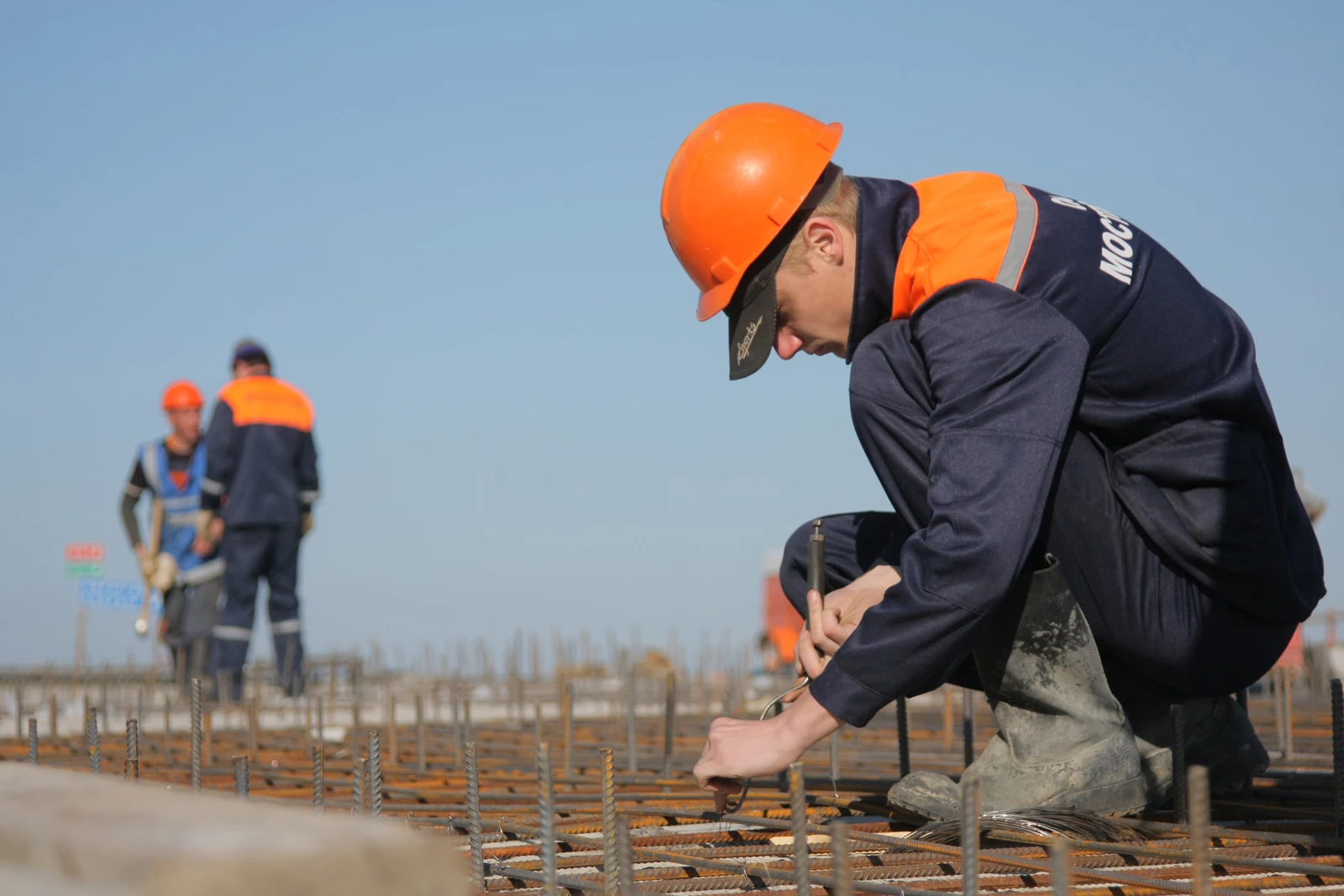14/05/2021 | Category: Commercial Insurance

Employers have a legal duty of care to provide their employees with a safe place and system of work. This includes safeguarding their personal safety, defined by the Suzy Lamplugh Trust as ‘an individual’s ability to go about their everyday life free from the threat or fear of psychological, emotional or physical harm from others.’
What should you do to address the issue of personal safety in the workplace, and how is this risk covered under commercial insurance policies?
What is personal safety?
Personal safety is about ensuring workers are not subject to violence, aggression or intimidation. This includes threat of physical violence as well as other forms of abuse such as harassment, bullying or threatening behaviour. Personal safety is particularly important in roles that are public-facing or involve working alone or in isolated locations.
In the construction sector, certain roles involve higher risk to workers than others. For example, meeting clients alone may carry risk of physical assault or threats of violence. Construction workers may experience threats from tenants or people opposed to a particular development.
A proactive approach to managing personal safety is the best way to address this risk. Making personal safety a priority and showing commitment from leaders is important in not only managing risk but also helping to improve relations between an organisation’s management, workers and their stakeholders.
Each worker should know how to identify, address and reduce the risk of violence and aggression in their working role, for example by learning how to put basic safety measures in place or de-escalate conflicts. Each individual will have a unique and personal response to threatening situations; clear policies and training will help to ensure workers are not left to rely on their instincts alone in managing difficult situations.
Personal safety and lone workers
The proportion of lone workers in the economy is increasing. Advances in technology and changes in working practices mean more people are working from home alone or working away from a fixed base, perhaps providing a specialist service. These changes have impacted construction along with many other industries.
There are many advantages to these developments, but lone working also brings its own risks and challenges. For example, employees can feel disconnected, suffer from poor productivity or experience mental health problems. It can be harder for line managers to pick up on these problems when they are not physically present with the workers on a regular basis.
Lone working can increase vulnerability to risks such as physical violence, especially if a worker is required to visit locations with high crime rates or in situations of conflict. Supervision and management models need to adapt to accommodate lone working, for example through new risk assessment procedures, setting timetables for staying in touch with workers, and helping workers to manage training, entering new situations and dealing with specific risks. Communication with lone workers can also be a challenge.
Organisations must ensure that all workers are included in communications such as planning social events, consultations about important change, training or ways to share concerns and ideas.
Employers should have procedures in place to manage incidents where any workers experience abusive or violent incidents. These should be checked to ensure they are appropriate for lone workers as well as those in traditional workplaces.
What does the law say about personal safety in the workplace?
Personal safety is not covered by one particular piece of legislation, but a network of different laws and regulations. Employers should seek detailed advice on their particular duties and responsibilities. You should also ensure you are clear about the requirements of your commercial insurance policy, and whether any exclusions apply.
Key legislation to consider in relation to personal safety includes:
-
Health and Safety at Work Act 1974
This is the primary piece of legislation on health and safety in the workplace. It places a duty of care on employers to take ‘reasonably practicable’ steps to protect the health, safety and wellbeing of employees.
-
Management of Health and Safety at Work Act 1999
Requires employers to carry out a ‘suitable and sufficient’ risk assessment to determine the risks employees encounter at work. Risk assessments are required in relation to the personal safety of people who may be affected by work activity – this includes people who are not employees. If you have more than five people working for you then you are required to keep written records of the risk assessment.
-
Corporate Manslaughter and Corporate Homicide Act 2007
This Act outlines criminal liabilities where a company breaches health and safety regulation and the breach results in a death.
-
Reporting of Injuries, Diseases and Dangerous Occurrences Regulations 2013 (RIDDOR)
RIDDOR requires employers to notify their enforcing authority in the event of an accident at work that results in death, major injury or incapacity to complete the normal work of a worker for more than seven days. This includes injuries as a result of an act of violence against someone in connection with their work.
-
Protection from Harassment Act 1997
This legislation makes it a criminal offence for someone to pursue a course of conduct they know, or ought to know, would cause another person to be alarmed, distressed or in fear of violence. The Act also covers stalking.
-
Equality Act 2010
This Act specifies that harassment is unwanted conduct which has the purpose or effect of violating a person’s dignity, or creating an intimidating, hostile, degrading, humiliating or offensive environment for that person. The conduct includes unwanted conduct of a sexual nature. The conduct may be related to a personal characteristic (or perceived characteristic) of a person, or by a person’s association with someone else with that characteristic.
-
Safety Representatives and Safety Committees Regulations 1977 [a]; Health and Safety (Consultation with Employees) Regulations 1996 [b]
These regulations require employers to inform and consult with employees in good time on matters relating to health and safety. Employee representatives may make representations to employers on health and safety matters.
What measures should you put in place to protect personal safety?
Addressing personal safety requires a broad approach that embeds awareness across the entire organisation. There is no solution that will suit all organisations, because each business has a unique risk profile.
Some actions that are likely to help include the following:
Carry out risk assessments
Risk assessments are vital to identify areas of risk and find proportionate ways to address these and safeguard employees. They are also a legal requirement. Workers might not always feel comfortable expressing concerns about their personal safety.
A sensitive approach to communication with workers, for example providing reassurance that concerns will be listened to and handled with confidentiality, could help to flag up problem areas.
Develop a lone worker policy
A lone worker policy explains the risks that workers may face when working alone at a site, what is expected from both employee and employer in that situation and what procedures help to minimise harm to workers.
The policy might state that workers can take a trusted colleague with them to isolated places, operate a buddy system, use a recognised taxi firm instead of public transport, and avoid isolated places after dark.
It is also advisable to set a time limit for client meetings and use a tracing system so colleagues know where a lone worker is and when they are expected to return.
Provide training for workers
Awareness of personal safety should be an ongoing concern, not just something that is touched on in employee onboarding sessions. Workers should understand the policies that apply to personal safety, their own rights and responsibilities and the steps they should take if they feel under threat.
Training might cover simple but effective strategies such as identifying exit routes from a site, trusting your instincts, and understanding actions you can take if you feel under threat.
Consider using personal alarms and lone worker devices
In some circumstances, technology can help to improve personal safety for employees. For example, a personal alarm can be invaluable in helping to shock and distract an attacker, providing an opportunity for a worker to escape from a threatening situation.
Lone worker devices can also be useful. Instead of sounding an alarm, these can be activated silently to call for assistance. Some lone worker devices are made to resemble ID badges, so they are always within reach but remain discreet. Lone worker devices should always be considered as an add-on to a set of personal safety policies – a device alone is not enough to manage risk.
When attending a site alone, workers should always ensure they have a mobile phone with a charged battery so they can call for help if necessary. Technology devices can also be a liability in some situations; carrying expensive laptops or other equipment could increase risk to workers, so careful consideration should be given to lone workers using these.
Personal safety is also relevant for employees working from home
Working from home is now a mainstay of working life, and this form of working brings its own particular set of risks. For example, if a worker needs to meet clients in the course of working, care should be taken not to disclose the worker’s home address.
If clients are permitted to enter a home worker’s home, care should be taken to ensure they are not able to obtain personal information about the employee. Employers may want to consider a buddy system where a colleague checks in with the home worker and a code word can be used if assistance is required.
Don’t forget about online safety
It’s important to recognise that personal safety is not just about immediate threats from strangers. Workers should also be protected from online intimidation and threats, including the protection of their privacy. For example, employees should be told not to share personal information such as their address or personal phone number with work acquaintances. If your business could involve an employee experiencing online abuse or trolling, a policy should be put in place to manage this risk.
Understand the terms of your commercial insurance policy
For an employer, protecting personal safety is the right thing to do: it prevents workers from coming to harm, maintains good relations with employees and clients, helps to protect your reputation and saves you from the cost, distress and inconvenience of dealing with the fall out from a personal attack on an employee.
Any approach to managing personal safety risk will have to strike a balance between sensible protection, legal obligations and ensuring that operations can continue smoothly and workers can be as productive as possible. Knowing the terms of your commercial insurance is an important factor in identifying this balance – you should be clear what is covered by your policy and where you may end up paying out in the event of a claim. 
What are the consequences of failing to address personal safety adequately?
What happens if your organisation falls short in managing risks to personal safety? A significant consequence that can be hard to measure is employee confidence.
Workers know when their employer is failing to protect them. If your approach is inadequate, you might not be told this explicitly but you can expect to see higher turnover of staff and higher rates of sickness absence due to stress and stress-related illness.
In the event that an employee’s personal safety is compromised, this could result in serious consequences for the company if your approach is found to be lacking. In a worse-case scenario, managers could find themselves being charged with corporate manslaughter, which carries a maximum sentence of life imprisonment or an unlimited fine. The consequences of failing on personal safety in terms of employee relations and brand reputation can also be considerable.
Is your commercial insurance up to the job?
Insurance Choice offers commercial insurance that is tailor-made to meet your needs. Based on your requirements, a policy might cover areas such as:
- Negligence
- Public liability
- Professional indemnity
- Employers’ liability
- Business insurance
- Buildings and contents cover
- Business interruption
- Tools and equipment
- Goods in transit
- Legal expenses
- Subcontractor cover
Why not get in touch for a commercial insurance quote today?
Policy benefits, features and discounts offered may very between insurance schemes or cover selected and are subject to underwriting criteria. Information contained within this article is accurate at the time of publishing but may be subject to change.
Frequently asked questions
How can I protect my employees who work from home?
It is essential to establish clear communication channels to ensure that employees feel supported and connected to their team. Regular check-ins and virtual meetings can help maintain a sense of community and address any concerns or challenges they may be facing. Lastly, promoting work-life balance is vital in protecting the mental health of your remote employees. Encouraging them to take breaks, set boundaries, and prioritise self-care will lead to greater productivity and overall well-being.
How can I make construction sites safer for my employees?
There are several steps you can take to make construction sites safer. Firstly, provide comprehensive training to your employees on safety procedures and protocols. This will empower them to identify potential hazards and take necessary precautions. Regularly inspect the site for any potential dangers, such as loose scaffolding or exposed electrical wires, and address them immediately. Additionally, equip your employees with appropriate personal protective equipment such as hard hats, safety goggles, and high-visibility vests.
What is occupational safety?
Occupational safety refers to the practices and measures taken to ensure the well-being and protection of workers in the workplace. It encompasses a wide range of factors, including physical, mental, and emotional health. Occupational safety aims to minimise the risks and hazards that employees may encounter while performing their job duties. This can include implementing safety protocols, providing appropriate training, and maintaining a safe working environment.
How do I promote mental health awareness within my construction business?
It is important to create an open and supportive environment where employees feel comfortable discussing their mental health concerns. This can be done by implementing regular check-ins with employees to assess their well-being and providing resources for mental health support, such as access to counselling services or employee assistance programs. Additionally, organising workshops or training sessions on stress management and mindfulness can help employees develop healthy coping mechanisms.
What is a risk assessment?
As an employer, you're required by law to protect your employees, and others, from harm. Under the Management of Health and Safety at Work Regulations 1999, the minimum you must do is:
-
identify what could cause injury or illness in your business (hazards)
-
decide how likely it is that someone could be harmed and how seriously (the risk)
-
take action to eliminate the hazard, or if this isn't possible, control the risk
Assessing risk is just one part of the overall process used to control risks in your workplace. For most small, low-risk businesses the steps you need to take are straightforward and are explained in these pages. For more info : Managing risks and risk assessment at work – Overview -HSE
